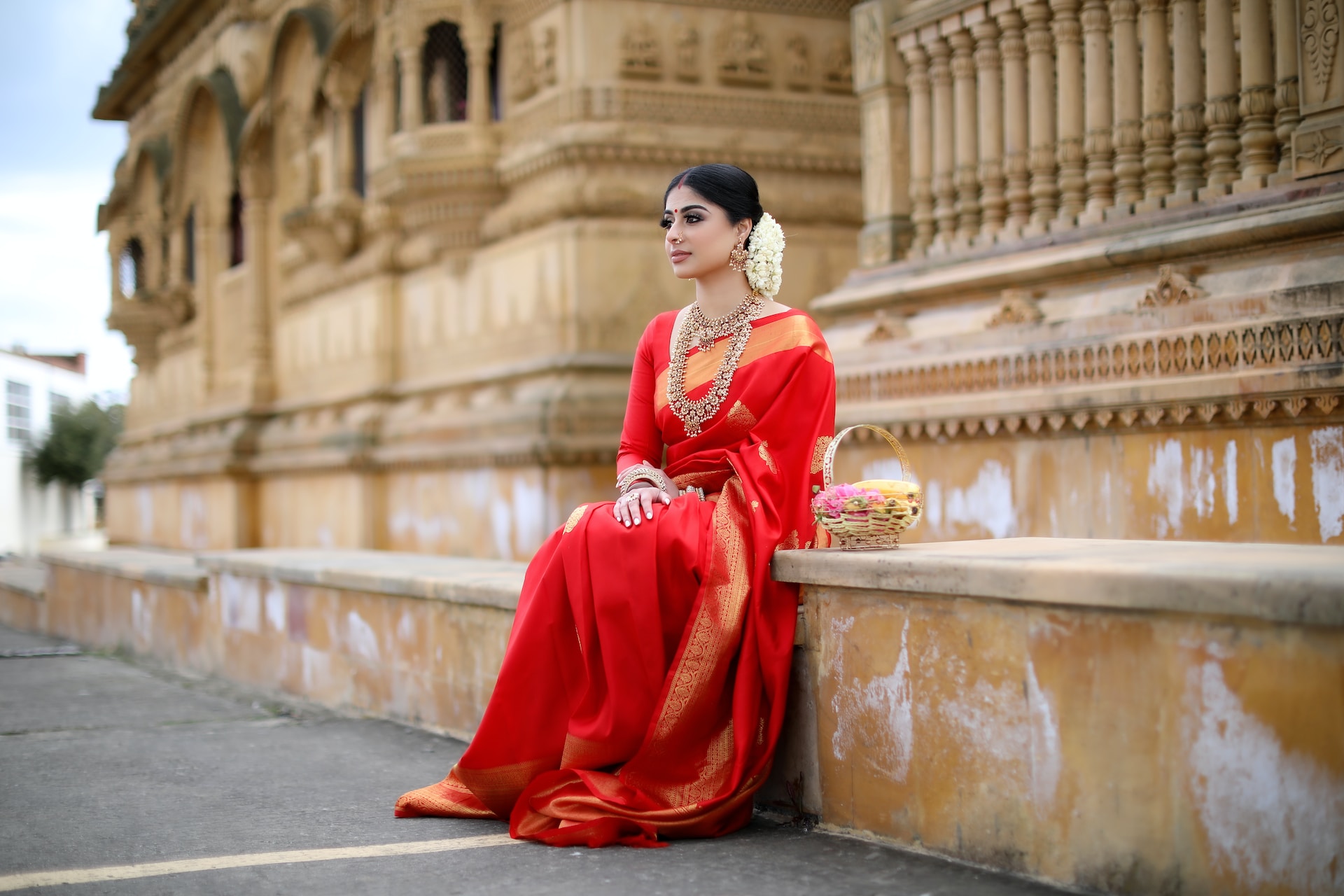
Traditional Indian textiles hold a wealth of artistry, culture, and history within their fibres. Among the most prized and beloved of these textiles is the kanjivaram saree. Woven with unmatched craftsmanship, these sarees are more than mere pieces of cloth; they embody tradition, sophistication, and the skilled hands that breathe life into them. Delve into the intricate artistry underpinning these sarees, shedding light on the craft transmitted across generations.
The Legacy of These Sarees: A Historical Glimpse
Originating from the ancient city of Kanchipuram in Tamil Nadu, the rich heritage of these sarees spans multiple centuries. A melange of vibrant colours, pure silk, and gold-threaded designs, these sarees reflect the genius of traditional Indian craftsmanship. The intricate weaving techniques, a blend of creativity and precision, have been meticulously handed down through generations, preserving the sanctity of this art form.
Each saree’s unique design and texture narrates a distinct tale of cultural pride and artisanal mastery. The enduring legacy of these sarees is a testament to the timeless artistry and symbolises the harmonious confluence of tradition and modernity, proving its relevance in today’s fashion-forward world. Plus, nowadays, these sarees have transcended into the World Wide Web. One can easily buy a kanjivaram saree online, thus bridging you to exquisite artistry.
The Enchantment of Silk: Crafting Elegance Thread by Thread
Central to every kanjivaram saree is the exquisite silk from which it forms. Accomplished artisans meticulously choose the finest silk threads, ensuring the creation of a fabric that is both abundant and enduring. The foundation of the saree is woven with meticulous attention to detail, producing a masterpiece capable of withstanding the passage of time. This process harmoniously blends traditional techniques with contemporary innovation.
Intricate Weaving: The Confluence of Art and Technique
The weaving process of a saree is a complex marvel, demanding skill and artistic vision. Each saree is adorned with intricate patterns and designs inspired by nature, mythology, and cultural heritage. The technique involves interlacing three types of silk threads—border, body, and pallu—resulting in a saree distinguished by various textured sections and motifs. The weavers’ hands move with precision, ensuring the alignment of every motif and the seamless integration of each thread.
Vivid Colors: A Palette of Tradition
The vivid and enchanting colours grace these sarees are captivating, bearing more than just visual allure. These colours are imbued with cultural significance, drawing from natural sources to represent various facets of Indian heritage. From passionate and auspicious reds denoting love to tranquil blues symbolising the divine, the colours are woven into the saree to recount tales of tradition and spirituality.
Narratives of Temples and Heritage: The Role of These Sarees
With their glorious charm, the sarees hold a special place in the tapestry of Indian weddings, festivals, and grand celebrations. Many families, valuing tradition and legacy, regard these exquisite drapes as cherished heirlooms, passing them down with pride and reverence from generation to generation.
Often adorned with intricate zari work—metallic threads meticulously woven into the fabric in delicate patterns—these sarees radiate unparalleled opulence and grandeur, making them coveted treasures. Beyond their aesthetic appeal, they are also integral to religious ceremonies, with designs deeply inspired by the ornate sculptures and rich mythological tales that grace the walls of ancient temples across the subcontinent.
Conclusion
In a contemporary landscape marked by rapid fashion trends, the kanjivaram saree stands tall as a testament to the enduring potency of tradition and craftsmanship. Infused with meticulous skill, each saree encapsulates the dedication of artisans who invest their heart and soul into crafting these masterpieces.
From the careful selection of silk threads to the intricacies of the weaving process, every stage reverberates with reverence for heritage and culture. As wearers don these resplendent sarees, they embrace elegance and participate in a legacy that has intricately woven communities across generations. The craft underlies the sarees is a living art, a symphony of threads that resonates through the ages.



